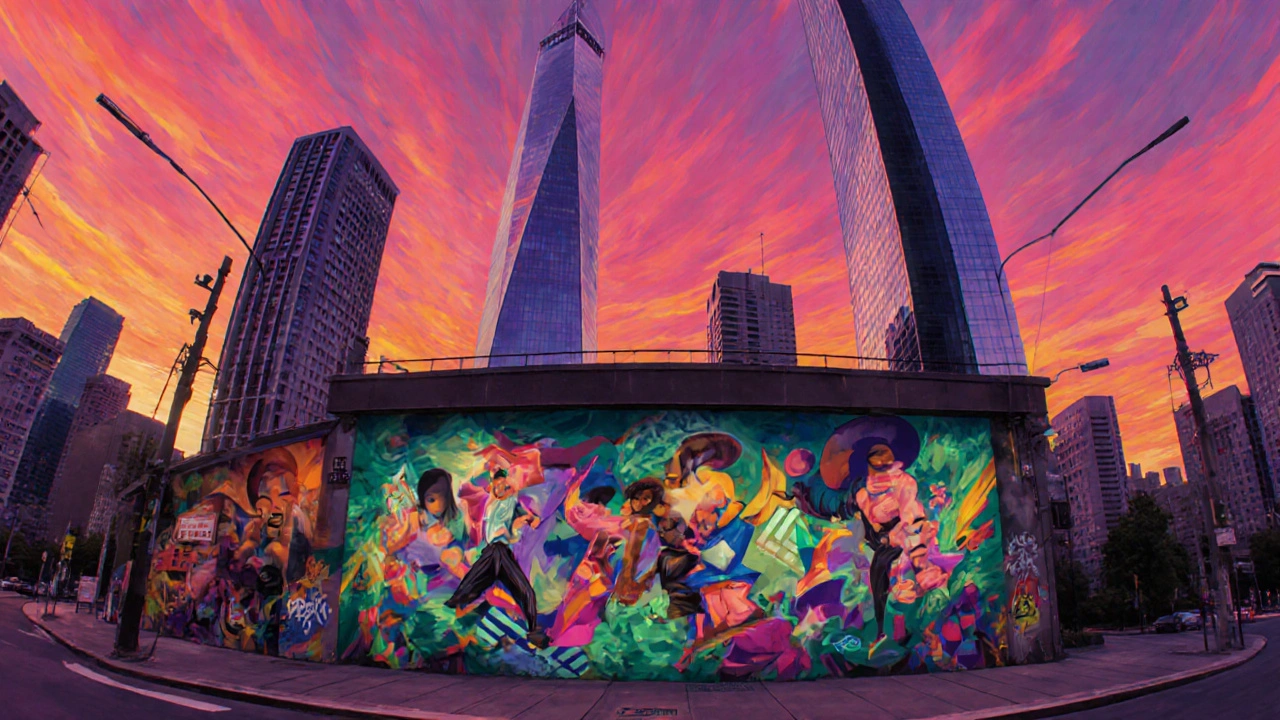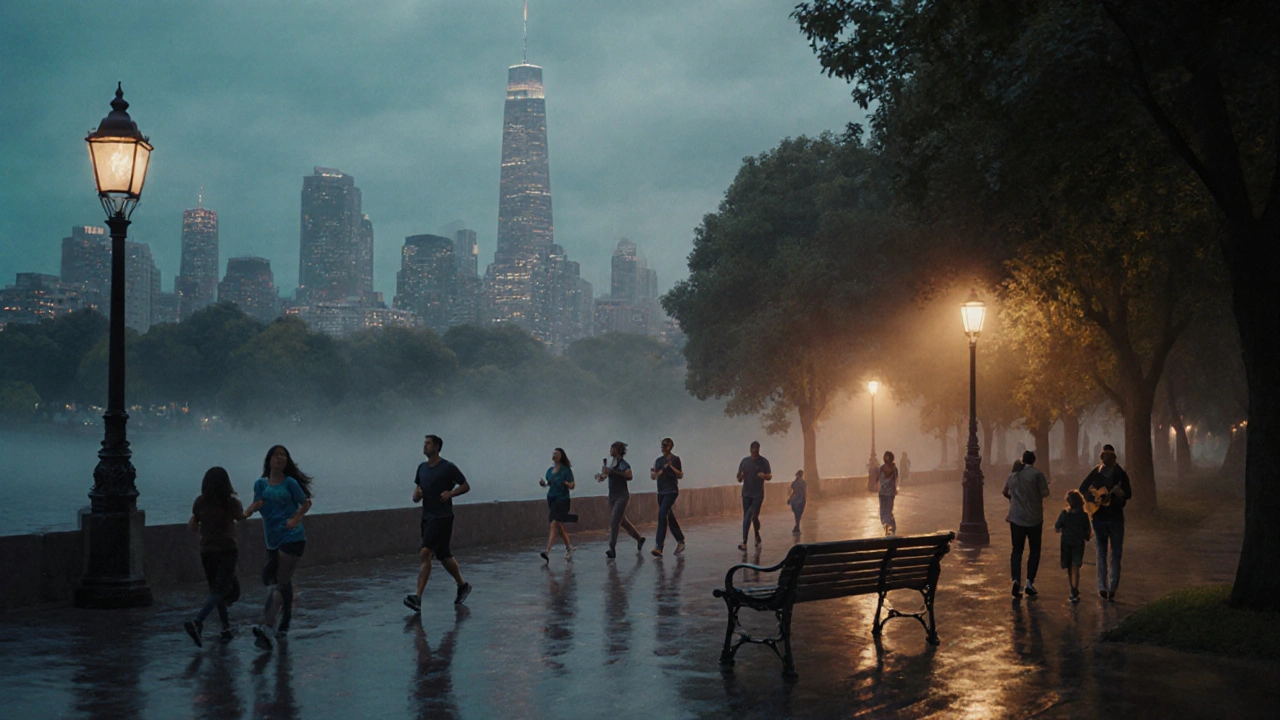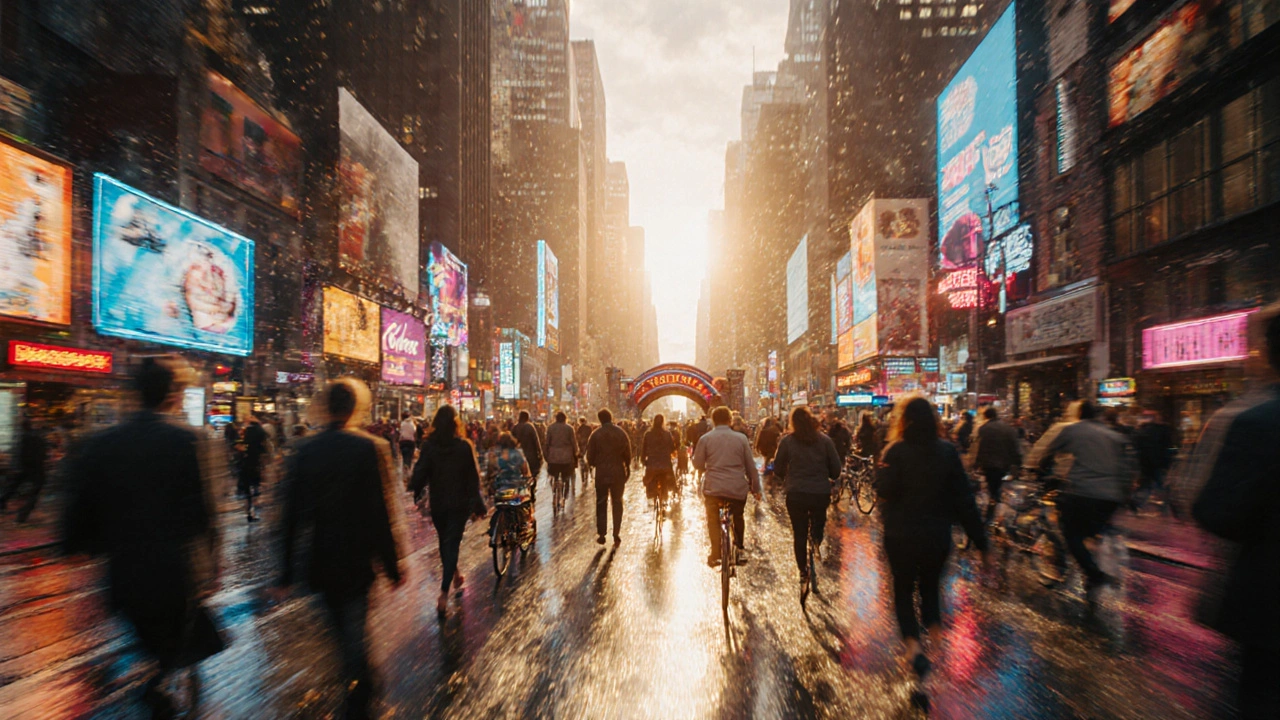Hidden Charms Explorer
Click on any charm below to learn more about how it contributes to the beauty of big city life.
City Energy
The dynamic rhythm that fuels creativity and innovation.
Architecture as Poetry
Skyscrapers and street art that transform the skyline.
Public Spaces
Parks, plazas, and transit hubs as communal gathering places.
Cultural Mosaic
Diverse food, music, and nightlife creating a vibrant tapestry.
Innovation Hub
Creative industries and rapid feedback cycles driving progress.
Beauty Through Struggle
Challenges that add depth and meaning to urban life.
When you hear big city life is the fast‑paced, densely populated experience of living in a major metropolitan area, where skyscrapers, cultural diversity, and 24/7 activity shape daily routines, the first images that pop into mind are traffic jams, endless crowds, or sky‑high rent. Yet beneath the noise lies a subtle, often unnoticed beauty that makes city living uniquely rewarding. Below is a quick snapshot of what makes the urban experience feel almost poetic.
TL;DR
- City energy fuels creativity and opportunity.
- Skyscrapers and street art turn the skyline into a living gallery.
- Public parks and transit hubs become communal living rooms.
- Diverse food, music, and nightlife stitch a vibrant cultural quilt.
- Embracing the city’s rhythm turns challenges into hidden charms.
The City Pulse: Energy and Diversity
Walking through a bustling avenue, you’ll feel a rhythm that’s impossible to replicate elsewhere. That rhythm isn’t just the roar of traffic; it’s the collective heartbeat of urban culture. Every language you hear, every street vendor’s call, every subway announcement adds a layer to a constantly evolving soundtrack.
Because millions of people converge, the city becomes a laboratory for social experiments. From spontaneous flash mobs to impromptu sidewalk debates, you constantly witness humanity in motion. This spontaneous diversity fuels both personal growth and professional networking, making the city a fertile ground for ideas that would stall in quieter settings.
Architecture as Poetry: Skyscrapers and Street Art
Most people admire skyscrapers for their height; few pause to read the story they tell. Buildings like the Empire State Building or Burj Khalifa are engineering marvels, but they also act as visual anchors that punctuate the skyline. When the sun sets, glass façades capture the city’s glow, turning steel into a mirror that reflects countless lives.
Below street level, street art adds color to concrete. Murals in neighborhoods like Brooklyn’s Bushwick or Berlin’s Kreuzberg are not just decoration; they’re political statements, community chronicles, and invitations to look closer. The city’s walls become canvases, and each brushstroke is a reminder that beauty can emerge from the most unexpected cracks.
Public Spaces: Parks, Plazas, and Transit Hubs
Contrary to the stereotype of concrete jungles, big cities often host lush green pockets that feel like secret gardens. Central Park in New York, HydePark in London, and Ueno Park in Tokyo are more than recreational zones-they’re social equalizers where joggers, picnickers, and street performers share the same air.
Transit hubs double as living rooms. A subway platform in Tokyo becomes a stage for flash karaoke; a London tube station hosts art installations; a Chicago ‘L’ stop turns into a pop‑up market on Saturday mornings. These shared spaces blur the lines between private and public, encouraging strangers to exchange smiles, recipes, or even business cards.

Cultural Mosaic: Food, Music, and Nightlife
If you crave variety on a plate, the city delivers. A single block can house a Mexican taquería, a Korean BBQ joint, an Ethiopian café, and a vegan bakery-all within walking distance. This culinary cross‑pollination nurtures taste buds and expands cultural awareness, making each meal a mini‑adventure.
Music drifts from jazz clubs in New Orleans to techno clubs in Berlin, creating a soundtrack that shifts with the hour. Nightlife isn’t just about parties; it’s a living archive of subcultures, from indie poetry slams to underground drag shows. Each venue, each gig, adds another brushstroke to the larger portrait of urban creativity.
Opportunities & Innovation: Creative Industries Thrive
Big cities are magnets for startups, tech hubs, and artistic collectives. The concentration of talent, capital, and infrastructure means ideas move faster. Think of Silicon Valley’s “Silicon Alley” in Manhattan or London’s “Tech City”-these clusters accelerate product launches, grant access to mentorship, and provide a ready audience for beta testing.
Because the market is dense, feedback loops are short. An app developer can launch at a coworking space, gather user insights at a café, and iterate within weeks. This rapid cycle fuels a sense of progress that many suburban or rural settings can’t match.
The Edge of Beauty: Challenges That Add Depth
Noise, rent hikes, and gentrification are real pain points, but they also sharpen our perception of what’s valuable. When a historic neighborhood faces redevelopment, residents often rally to preserve murals, local shops, and community gardens. Those preservation battles turn urban change into a narrative of resilience, reminding us that beauty isn’t static-it’s earned through collective effort.
Even the city’s hardships have an aesthetic. Rain‑slicked streets at night create reflective canvases; fog rolling over downtown skyscrapers gives the scene a cinematic aura. The juxtaposition of grit and glamour is what makes the urban landscape feel alive.
Big City vs. Small Town: A Quick Comparison
| Aspect | Big City Life | Small Town Life |
|---|---|---|
| Population Density | High - millions per metro area | Low - often under 10,000 residents |
| Public Transportation | Extensive subway, bus, rail networks | Limited or none; car‑dependent |
| Cultural Options | World‑class museums, theatres, concerts daily | Occasional festivals, local theater |
| Housing Cost | High - rent and purchase prices premium | Lower - more affordable real estate |
| Job Market | Diverse, fast‑growing, high‑skill sectors | Limited, often single‑industry focused |
| Sense of Community | Can feel anonymous, but micro‑communities thrive | Close‑knit, everyone knows each other |
How to Embrace the Unspoken Beauty
- Walk, don’t drive. Stroll through different neighborhoods to discover hidden murals, local bakeries, and unexpected parks.
- Use public transit as a scouting tool. Each train line opens a new micro‑culture, from late‑night art shows to weekend farmers’ markets.
- Attend community events. Street festivals, pop‑up galleries, or neighborhood clean‑ups let you meet the people shaping the city.
- Take a moment to observe architecture. Whether it’s a historic brownstone or a modern glass tower, notice the details-cornices, ironwork, how light plays on the façade.
- Support local creators. Buy from independent coffee roasters, commission a mural, or frequent a small‑scale theater. Your support keeps the city’s creative pulse alive.

Frequently Asked Questions
Is big city life more stressful than small‑town living?
Stress levels depend on personal habits, not just location. The hustle can feel overwhelming, but access to gyms, mental‑health resources, and flexible workspaces often offsets that pressure. Learning to set boundaries-like designating “offline” hours-helps many city dwellers manage stress effectively.
How can I afford housing in a major city?
Consider co‑living arrangements, rent‑controlled apartments, or neighborhood swaps. Many cities also offer affordable‑housing lotteries and subsidies for low‑income residents. Researching these programs early can dramatically lower costs.
What are the best ways to meet people in a bustling metropolis?
Join hobby‑based meetups, attend public lectures, or volunteer at community gardens. Regularly visiting the same coffee shop or co‑working space also creates organic connections over time.
Does big city life limit outdoor activities?
Not at all. Urban parks, riverfront trails, and rooftop gardens provide ample space for jogging, yoga, or picnics. Many cities also offer bike‑share programs and nearby natural reserves reachable by train.
How can I contribute to preserving the city’s cultural heritage?
Support local museums, attend historical walking tours, and donate to preservation societies. Volunteering for mural projects or community archives also directly protects the city’s artistic memory.

